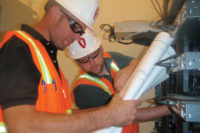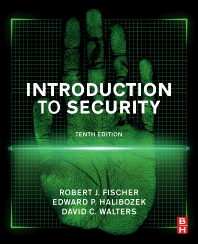The Insurance Loss Control Association represents the loss control professionals in the insurance industry — the eyes and ears of the underwriters. As investment income has plummeted in the past decade, the insurance industry profitability model has undergone a radical change. Moving from the back seat, loss control is now the focal point in the drive for profitability.
To put things in perspective, 15 years ago insurance business models paid out $101.15 for every $100 of premium collected. Times were good, however, as investment income from the markets more than made up the difference. The entire industry became “premium-centric” as the stock market skyrocketed and investment income soared. With the new realities following the market’s collapse, insurers have swung back to a business model that targets paying $75 or $80 for every $100 in premium collected; and loss data is the driving factor in pricing.
The financial crisis affected more than the markets; it also impacted public services. Law enforcement budgets and resources are undergoing draconian cuts — with greater demands made on a shrinking force of officers. Much of this pressure to deliver more with less translates to non-response initiatives troubling the security industry, in which police stop responding to alarms. This same pressure on resources means “non-investigation” to the property/casualty insurers with a beleaguered law enforcement community saying, “It is only a property crime and it is insured anyway.”
We find the same problem from two different perspectives.
The new push towards building stronger relationships between the security industry and law enforcement is the answer. What changes the game are Priority Response and the Central Station Alarm Association’s (CSAA) revolutionary Automated Security Alarm Protocol (ASAP) to deliver event-based video to the 911 center and the first responder. The insurance industry is looking for alarm systems delivering police response and catching the criminals in the act.
New technologies and processes have created unparalleled opportunities to re-establish partnerships with insurers to deliver new value to our customers. Historically, the insurance and the security industries have been very close. Much of this was because alarms meant law enforcement and lower losses. The insurers encouraged and drove their policy holders to install security systems as a proven method to reduce losses. In the 1970s this relationship began to decay. The financial markets began a period of unprecedented growth for insurers, creating an environment where losses no longer mattered. On the security side, mass market alarm systems flooded the country, creating new issues with false alarms and degrading police response. The relationship atrophied to the point where only one major insurer, Jewelers Mutual, still mandated UL certificated security systems for their policy holders.
With ASAP and new technology solutions that deliver timely police response and reduce insurers’ losses, we have the makings of restoring the insurance/alarm industry partnership that was so successful in the last century. Rebuilding this partnership was the subject matter presented to the Insurance Loss Control Association last month in Columbus, Ohio. As the co-chair of the CSAA Insurance Liaison Committee, I presented a report on Priority Response to Video Intrusion Alarms and ASAP Phase 2. Fred Bales, of Insurance Services Office (ISO), an industry support organization, presented “Emergency Services — Working with Public Responders to Reduce Losses.”
Based upon the overwhelming response among the conference attendees interested in additional dialog with the security industry, rebuilding the partnership is already underway. The insurers recognize the value of a strong relationship between alarm companies and law enforcement and this will benefit all of the stakeholders — insurers with lower losses, law enforcement with more arrests, and the alarm industry delivering greater value to its customers.






